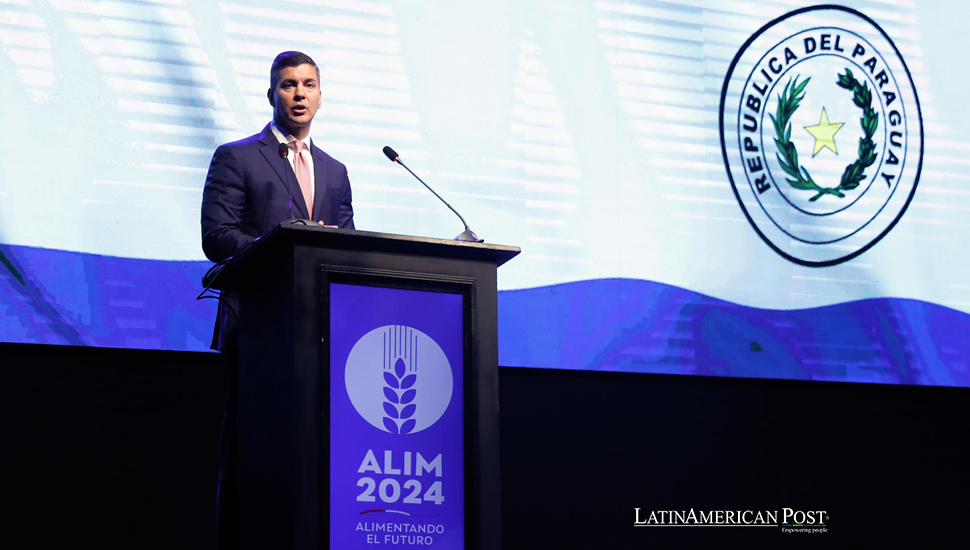Paraguay’s Push for Affordable Essentials: A Sustainable Solution?

In response to inflationary pressures from a rising dollar and river transport challenges, Paraguay’s government has launched a plan with the potential to significantly reduce basic commodity prices. But will this campaign provide lasting relief or just a temporary fix?
Urgent Action Required as Costs SoarWith inflation looming due to a strong U.S. dollar and record-low river levels impeding the transport of essential goods, the Paraguayan government has launched a campaign to cut the costs of basic goods. This initiative, championed by President Santiago Peña and critical players in the Paraguayan retail and industrial sectors, highlights a growing urgency to stabilize prices as economic factors converge to threaten affordability. By partnering with industrial guilds like the Unión Industrial Paraguaya (UIP) and the Paraguayan Chamber of Supermarkets (Capasu), the government is trying to make household essentials more affordable and cushion lower-income families against these economic pressures. But while a 20-40% price cut sounds promising, will this campaign alleviate the cost-of-living pressures sustainably?
The new measures, slated to begin on November 5th, demonstrate an immediate response to a concerning scenario: an 8,000 guaraní to the dollar exchange rate and a severely depleted Paraguay River that supports 80% of the country’s trade. This plan, while offering short-term relief, underscores the crucial need for deep collaboration across industry lines to succeed. Without careful execution and a view toward lasting impact, the campaign could be a seasonal solution to a persistent challenge.
A Temporary Patch or Long-Term Solution?
While President Peña’s administration deserves recognition for its proactive stance, the limited duration of the campaign raises the question: Is this a lasting solution? The campaign’s first phase is set to run until November 20th, with a second phase aligned with the holiday season. Although significant for immediate relief, this short timeframe does not adequately address the longer-term affordability issues that low-income households face. Paraguayans, particularly those in vulnerable economic brackets, need sustainable relief from volatile prices that can destabilize household finances with each market fluctuation.
Moreover, as Enrique Duarte of UIP stated, the Paraguayan government’s commitment to the “least possible fluctuation” of prices may prove challenging given the very factors driving prices up. While the campaign looks to involve small fruit and vegetable producers in long-term contracts to increase supply predictability, such promises require sustained investment and policy support to truly stabilize costs for the most vulnerable.
Bringing the Private Sector on Board
To provide lasting affordability, the government aims to build an enduring synergy with private sector players. This collaboration could be promising if the parties consistently focus on supporting affordable products beyond the campaign’s two-month window. Small business empowerment, bulk purchasing, and incentives for sectors like the meat industry to join this affordability drive could contribute to a more resilient approach. But the government must also offer something in return—tax incentives, infrastructure improvements, or regulatory support—to make it worthwhile for these businesses to keep prices down over the long haul.
Furthermore, a collaborative approach will be essential if Paraguay aims to avoid becoming too reliant on fluctuating global commodities markets that heavily influence prices for essentials. By involving local producers in fruit and vegetable fairs and purchase agreements, the administration hopes to stabilize domestic prices and ensure long-term supply predictability. However, as beneficial as these initiatives might be, a consistent policy framework must be in place to prevent price volatility from overshadowing these efforts in the future.
Ensuring Accessibility Amid Inflationary Pressures
The global rise of the U.S. dollar is not unique to Paraguay. Still, its effects are felt acutely due to the country’s import-heavy economy and reliance on river-based logistics. While the Paraguay River, an essential artery for transporting goods, is currently experiencing historically low levels, it emphasizes the need for alternative infrastructure and transport solutions to prevent supply chain disruptions. Ensuring citizens can access affordable goods during logistical crises demands innovative thinking and long-term investment in Paraguay’s trade infrastructure.
A reliance on river transport alone may leave Paraguay vulnerable to recurring issues, especially as climate variability increases. Future-proofing the supply chain may require investments in alternative routes and modes of transport and a reevaluation of energy-efficient solutions that can support Paraguay’s economy while reducing reliance on the river. The Paraguayan government’s response to the inflationary pressures seems reactive, designed to address immediate concerns without tackling the root infrastructure problems that have made the country’s economy so vulnerable to external factors.
Toward a Truly Affordable Future for Paraguay
Although the government’s announcement of a campaign to stabilize prices is a promising start, achieving a year-round reduction in costs remains a complex task. If fulfilled, President Peña’s push for long-lasting collaboration between the public and private sectors could lay the groundwork for a meaningful shift in Paraguay’s approach to managing essential goods’ prices.
Also read: Ecuador Secures $150 Million Loan to Combat Crime and Strengthen Security
Yet, this campaign may be seen as a stopgap rather than a lasting solution without a structural shift in the country’s approach to inflation, supply chain resilience, and private-sector incentives. Ultimately, a broader vision that includes investments in local agriculture, sustainable trade infrastructure, and policies to reduce currency dependency will be needed to provide Paraguayan families with stable, affordable access to essential goods year-round.





